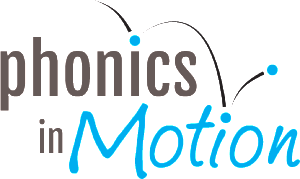It’s no secret that kids love to read. But sometimes they just don’t know where to start. Phonics instruction helps kids unlock the world of reading and writing. Phonics is the link between spoken and written language. Children first use it to “crack the code” of print so that they can begin to read […]
Read moreReading Fluency: What It Is & Why It Matters
Reading fluency is one of the most essential yet challenging components of early literacy. Yet, many parents and teachers do not understand it well, sometimes thinking that reading fluency is a matter of how fast a child can read. This is far from the truth! Reading fluency goes much deeper than speed. It has to […]
Read moreThe Importance of Growing Vocabulary
Children need rich opportunities to learn and use new words. Vocabulary is an essential part of language competence. As kids grow, their vocabulary develops. The more words they know, the better they understand what they hear and read and thus become better communicators. A good vocabulary helps your child in school and beyond because […]
Read morePhonemic Awareness – So Much More Than Just Blending
Phonemic Awareness is one of the basic skills of early literacy. Are you doing enough to improve phonemic awareness skills in your classroom?
Read moreReading Comprehension: The Key To Educational Success
Reading comprehension is one of the pillars of early literacy. It is one of the most important skills for early readers to learn. Providing young readers with engaging and interactive experiences helps to encourage development. Reading comprehension is hard. Learning to read individual words is important, but understanding the content is the key to mastering […]
Read moreThe 5 Pillars of Early Literacy
Primary teachers spend most of their day teaching literacy, and for good reason. Research shows that children’s early experiences with print are critical in developing their language and literacy skills. Surprisingly, there is little discussion about what it means to teach reading or how to teach early reading skills. Some people think that learning to […]
Read moreSounds and Letters: How Kids Learn To Read
One of the cornerstones in early education is teaching children to connect sounds with letters and letter combinations. Students need to know that sounds can change depending on how they are used. The knowledge of letters and the sounds they make will guide students through the reading process. Reading starts with sounding out words […]
Read moreUsing The Science of Reading To Encourage Better Readers
Have you ever wondered how children learn to read? Or have you ever wondered why your child can’t “sound it out?” Learning how kids learn to read will make you a better teacher and give you scientific insights that can aid your child’s reading ability. The Science of Reading resulted from one of the […]
Read moreMoving Beyond Sound Walls: PIM’s Approach to Reading Instruction
Traditionally, primary education classrooms have utilized word walls. While they may have been somewhat successful, literary science shows that early learners respond better to and have better learning outcomes from sound walls. The problem is, word walls are often not used frequently throughout the whole year. Why? Teachers end up ditching them when they realize […]
Read more
